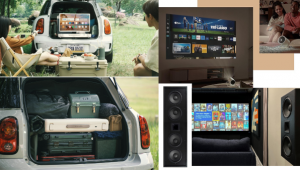- REVIEWS
Displays Electronics 
Speakers Sources 
Other Gear Software - TOP PICKS
- HOW TO
How To Buy 
How To Use 
Tech 101 - BLOGS
- NEWS
- FEATURES
- INSTALLS
Custom Installation - SUBSCRIBE
Estimated DTV Coverage Woes Worsen
Remember the research firm that predicted 5.9 million antenna-dependent U.S. households would lose at least some channels after the DTV transition? You know, the survey that convinced the Federal Communications Commission to do further field testing to gauge the extent of the potential problem? Well, that same firm has now upped its estimate, predicting that 9.2 million households will have reception problems. But what's a few million more angry viewers between friends?

The latest research by Los Angeles-based Centris pegs the number of U.S. antenna-dependent households at 17 million, of which 54 percent are in "challenging reception areas." Centris defines challenging reception as four or fewer broadcast channels from a small to medium omnidirectional rooftop or indoor antenna. Ten percent of these households will receive only one channel and another 24 percent will receive none at all.
Bottom line: Many households planning to use a set-top box to keep an old analog TV going will also need to upgrade to a more sensitive antenna.
Here are what Centris calls "the top ten most at-risk TV markets":
- New York
- Boston (Manchester)
- Philadelphia
- Los Angeles
- Washington, DC (Hagerstown)
- Seattle-Tacoma
- San Francisco-Oakland-San Jose
- Minneapolis-St. Paul
- Atlanta
- Cleveland-Akron (Canton)
| Displays Electronics Speakers | Sources Other Gear Software | Top Picks of the Year Top Picks | Custom Install How To Buy How To Use |
Tech 101
|
Latest News Features Blogs | Resources Subscriptions |
WHERE TECHNOLOGY BECOMES ENTERTAINMENT
 © 2025 Sound&Vision
© 2025 Sound&VisionAVTech Media Americas Inc., USA
All rights reserved























































